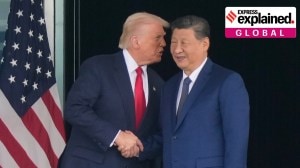Bearing arms
Russia's president comes to India at a time when both countries are deeply engaged in completing their transitions to a market economy. As...

Russia’s president comes to India at a time when both countries are deeply engaged in completing their transitions to a market economy. As such commercial, rather than political, issues are likely to dominate the agenda.
Nevertheless the signing of a strategic partnership declaration by Atal Bihari Vajpayee and Vladimir Putin is important. Not only does it confirm the long term political interests the two countries share in Asia, the declaration also lays the ground for cooperation on two issues of foremost concern today: defence cooperation and joint initiatives for dealing with the gathering storm in the wider Central Asian region. Although India has been shopping around recently, Russia remains the major supplier of equipment to India’s armed forces. That arrangement is likely to hold good for some more time but not endlessly.
The proportion of defence purchases India makes from Russia has come down and certain key items like the advanced jet trainer and the advance warning and control systems are being sourced elsewhere.
How far and fast the defence relationship will change depends to some extent on the kind of deals the Russians are prepared to offer and on the competitiveness of its defence industry. It is important that India should look for the transfer of technology in its arms deals. This is a critical period in the defence relationship since India is or will soon be embarking on not only filling holes in its existing requirements but also on planning for future needs in keeping with new defence strategies.
India is tied to the Russian armaments industry essentially because the army, airforce and navy have traditionally been equipped by the former Soviet Union and that relationship has continued under a long term defence cooperation agreement signed with the Russian Federation when Boris Yeltsin was president. In the same period, however, India’s choices in defence technology have widened. US sanctions since Pokharan have abruptly blocked one source of sophisticated weaponry but there are no such restrictions on the European defence industry. Israel has also emerged as an important defence partner.
There is serious competition for the Russians in high-tech equipment. Despite the years of economic decline, Russian military technology in some areas has managed to keep its edge. Thus the Sukhois India is interested in are among the best in their class of strike aircraft. Things are not so certain in many other departments.
As the continuing spell of incidents of terrorist violence in Central Asian countries underlines, the whole region from India’s north western borders to Russia’s southern borders is in turmoil. Weak political regimes and even weaker economies from Pakistan through Afghanistan to Tajikistan and Kazhakstan are under assault from many directions: if it is not fundamentalist Islamic groups and the Taliban contagion, it is the narcotics trade that is undermining peace and stability in the region.
India and Russia, as also China, can make a difference if they cooperate and fashion joint policies and action to contain and counter the forces of anarchy that have been let loose. If the Putin visit results in joint mechanisms for dealing with the looming chaos, a great deal will have been achieved.



- 011 day ago
- 021 day ago
- 0319 hours ago
- 041 day ago
- 051 day ago




























